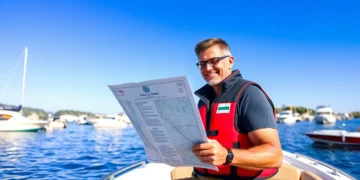Planning a trip to Europe can feel like trying to solve a Rubik’s Cube blindfolded. With so many countries, cultures, and cuisines, it’s easy to get overwhelmed. But fear not! With a dash of organization and a sprinkle of adventure, he or she can turn that daunting task into an exhilarating journey.
Imagine sipping espresso in a quaint Italian café, wandering the cobblestone streets of Paris, or exploring ancient ruins in Greece. Europe offers endless possibilities for the intrepid traveler. This guide will break down the essentials, making it simple to navigate the planning process while keeping the fun factor high. So grab a notepad and get ready to transform your dream trip into reality—because who wouldn’t want to experience a little European magic?
How to Plan a Trip to Europe
Planning a trip to Europe involves several key steps. Start by determining travel dates. Consider peak seasons, which generally run from May to September, to avoid large crowds.
Next, create a budget. Include accommodation, food, transportation, and activity costs. Research costs in various countries, as they can vary significantly. For example, while a meal in Italy might average $20, the same meal could cost $12 in Spain.
Choose destinations based on interests. Explore historical sites, culinary experiences, or natural landscapes. Prioritize must-see attractions. Make a list of cities that appeal most, such as Paris, Rome, and Barcelona.
Select transportation methods for moving between destinations. Europe’s extensive rail system offers convenience with options like Eurail passes. Buses and budget airlines can provide economical alternatives when trains aren’t available.
Book accommodations early. Options range from hotels to hostels and vacation rentals. Read reviews to ensure quality and value.
Plan daily itineraries. Allocate time for each attraction and include downtime. Factor in travel distances, and aim for a mix of planned activities and spontaneous exploration.
Keep travel documents handy. Ensure passports are valid for at least six months from the date of departure. Research visa requirements for each country to avoid complications.
Stay informed about local customs and languages. Familiarizing oneself with basic phrases in the local language enhances interaction. For example, knowing how to say “thank you” in French or Italian facilitates positive exchanges.
Finally, pack wisely. Include versatile clothing suitable for varying climates. Ensure essential items like travel adapters and medications are accessible.
Following these steps makes planning a rewarding experience, setting the stage for a memorable European adventure.
Setting a Budget

Establishing a budget is crucial for any European trip. It helps prevent overspending and ensures a fulfilling travel experience.
Determining Costs
Identify the major expense categories: accommodation, food, transportation, and activities. Research averages for these costs in desired countries. For example, hotel prices in Paris often exceed those in Budapest. Allocate around $100 to $150 daily for food, factoring in local dining styles. Use public transport options, which may save substantial amounts compared to taxis. To avoid surprises, factor in entrance fees for major attractions, which can range from $10 to $30 each. Knowing these averages aids in accurate budgeting and avoids stress later.
Saving Tips
Look for promotions and discounts that can significantly reduce travel costs. Booking flights and accommodations well in advance often yields better rates. Consider traveling during shoulder seasons, such as spring or fall, to enjoy lower prices and fewer tourists. Meal options also affect budgets: dining at local eateries instead of tourist spots saves money while providing authentic experiences. Utilizing rail passes can lower transportation costs across multiple cities. Lastly, creating a clear budget and sticking to it ensures a delightful, financially sound journey through Europe.
Choosing Destinations
Selecting the right destinations is crucial for an enjoyable trip to Europe. Identifying interests helps travelers create a fulfilling itinerary.
Popular Cities to Visit
Paris sparks visions of iconic landmarks and rich culture. Rome mesmerizes with its ancient history and vibrant street life. London offers a blend of tradition and modernity, with attractions like the Tower of London and Buckingham Palace. Barcelona captivates with its unique architecture and lively atmosphere. Each city showcases distinct experiences that resonate differently with each traveler.
Off-the-Beaten-Path Locations
Exploring lesser-known spots adds a unique touch to any European adventure. Ljubljana, Slovenia, enchants visitors with its charming canals and vibrant square. San Sebastián, Spain, tempts food lovers with its renowned culinary scene. The medieval town of Ghent, Belgium, contrasts heavy tourism with its serene canals and historical architecture. Hvar Island, Croatia, invites travelers to enjoy stunning beaches and local vineyards. Such locations provide an authentic glimpse into local life while avoiding heavy crowds.
Creating an Itinerary
Creating an effective itinerary is essential for a successful trip to Europe.
Duration of Stay
Determining the duration of stay significantly influences travel experiences. Travelers should allocate sufficient time based on destinations and interests. Spending four to five days in major cities like Paris or Rome provides ample opportunity to explore. Shorter stays can work if travelers prioritize specific attractions. For smaller towns, two to three days often suffices to soak in local culture. Additionally, it’s wise to consider travel time between locations, as some journeys can take longer than expected. Balancing travel and relaxation ensures a fulfilling experience without feeling rushed.
Must-See Attractions
Identifying must-see attractions creates a roadmap for memorable adventures. Iconic landmarks such as the Eiffel Tower in Paris and the Colosseum in Rome attract millions annually. Travelers often include the Sagrada Família in Barcelona and the British Museum in London on their lists. It’s beneficial to research ahead, noting opening hours and any ticket prerequisites. Don’t ignore hidden gems like the canals of Venice or Lisbon’s Alfama district. Prioritizing a mix of well-known sights and lesser-known locations enriches travel experiences. Judicious planning enhances exploration while ensuring that essential attractions remain a focal point.
Booking Accommodations
Booking accommodations plays a crucial role in planning a successful European trip. It impacts comfort and influences the overall experience.
Types of Accommodations
Hotels, hostels, vacation rentals, and guesthouses offer various options. Luxury hotels in Paris present high-end amenities, while budget-friendly hostels in Budapest cater to cost-conscious travelers. Vacation rentals provide home-like experiences, offering kitchens and flexible spaces ideal for families or groups. Guesthouses deliver local charm and personalized service, often found in picturesque towns. Each option presents unique benefits depending on travelers’ preferences and budgets.
Finding the Best Deals
Finding the best accommodation deals requires research and foresight. Use online platforms like Booking.com or Airbnb to compare prices and reviews. Booking in advance and during shoulder seasons enhances chances of securing lower rates. Signing up for newsletters from travel sites often provides access to exclusive discounts. Exploring local social media groups or forums can reveal hidden gems and recommendations from fellow travelers. Prioritizing flexibility in travel dates also aids in capturing more affordable options.
Conclusion
Planning a trip to Europe can be a thrilling adventure filled with endless possibilities. By taking the time to organize travel dates and budgets travelers can create an itinerary that balances must-see landmarks with hidden gems. Prioritizing personal interests and choosing the right accommodations ensures a fulfilling experience tailored to individual preferences.
With the right preparation and a spirit of exploration travelers can navigate the complexities of European travel with ease. Embracing spontaneity while sticking to a plan allows for memorable moments that go beyond the typical tourist experience. As they embark on this journey they’ll undoubtedly create lasting memories and discover the beauty of Europe in all its diversity.









